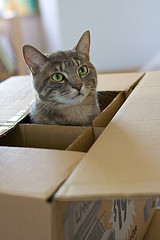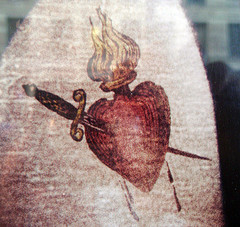June 4, 2010
by Traci Gardner
 Online or off, getting students to talk to each other is a tricky task. I’ve had my happy share of classes where discussion took off, but I’ve also had my quota of classes where not even bribery with cookies and candy could get students chatting.
Online or off, getting students to talk to each other is a tricky task. I’ve had my happy share of classes where discussion took off, but I’ve also had my quota of classes where not even bribery with cookies and candy could get students chatting.
The FeverBee Primer About Successful Online Communities can help. While meant more for corporate and public community building, the lessons apply to the classroom just as well.
Lesson One: Establish a reason to connect
FeverBee Blogger Richard Millington explains that the key to a successful community is “connecting a group of people online and making them feel a part of something special.” Students aren’t going to launch into discussion just because we throw them together. We have to give them reasons to connect.
Themed classes (e.g., classes focused on a specific topic like “rhetoric of war” or “gender images”) can have a real advantage here. Students are already in the classroom because of their shared interest, so you’re one step closer to community.
In other classes, you have to work a little harder. Try tying current events on your campus or in the news to the pedagogical goals of the course to make connections and give students a reason to start talking.
For instance, almost everyone has an opinion on the Mac vs. Windows vs. Linux debate. Share the Fast Company article, “Analyzing Steve Jobs’ Language at D8: He’s a "People" Person!” to tie discussion of personal opinions to rhetorical analysis.
Lesson Two: Focus on group bonding
With so much we need to accomplish in the classroom, group bonding may seem off-task. Millington’s advice is important here:
The better you get to know and like your fellow members, and the more you care about their opinion of you, the more you participate and thus work towards a successful goal.
Give students time to bond and make connections. Even simple icebreakers can help students get to know each other and ultimately increase participation.
Lesson Three: Do things together
You have gathered your students and they have some common interests, but that still may not be enough to build a thriving community. Millington explains:
Bonding a community means doing things together. Like challenges for your community, milestones to reach or problems to overcome. It also means having a high level of interactions per member and ensuring members are happy to disclose their thoughts, feelings and other information.
Simply put, the class needs to do things together. You don’t have to layer on another set of tasks to make this happen. Look at what students are doing and try strategies like these:
- Recognize students with the most posts (just simply by the number).
- Identify students whose questions lead to the most follow-up discussion.
- Point out posts with great ideas that may have been overlooked.
- Mark group milestones (like reaching 1000 posts as a class).
As Millington mentions, community challenges can also be effective. As a simple challenge, you might ask students to reach a certain number of posts on a specific topic. If students work in small groups, challenge groups to have each member participate five times, for example.
Consider community participation projects as well. You might challenge students to post photos of language use from the local area (e.g., misspellings, grammar errors, ironic images). Start class collections of great resources, like links to websites that relate to the class focus. If your technology resources allow, you can even add some simple voting for the favorite photos or links.
Lesson Four: Encourage authentic discussion
To ensure things move in the right direction, do all you can to encourage authentic conversation. Allow students to discuss topics freely and without fear of criticism.
Free discussion doesn’t mean anything goes however. Millington suggests that
Allowing self-disclosure also means accepting negative comments. Not personal attacks, they’re nearly always worth removing (as our [sic] racist, bigoted and sexist remarks) . . . .. [Allow] heated debates and open disagreement to take place. It’s tough to let this happen, it feels like you should jump in and break it up. But don’t. Let people get their opinions out into the open.
Be sure the boundaries for safe and appropriate discussion are clear. Talk about the ad hominem fallacy, and explain how it applies to class discussion. Work together to create some class guidelines to help things run smoothly if you like.
Looking for more?
You’ll find some more suggestions in the FeverBee Primer. For some additional ways to highlight class members, check out 10 Excellent Rewards You Can Offer Members That Don’t Cost A Penny.
[Creative Commons licensed Flickr photo by Mangrove Mike]
 Figuring out copyright can be like piecing together a puzzle. You have a good idea how it’s supposed to work in the end, but all the little pieces can be confusing to piece together.
Figuring out copyright can be like piecing together a puzzle. You have a good idea how it’s supposed to work in the end, but all the little pieces can be confusing to piece together.








